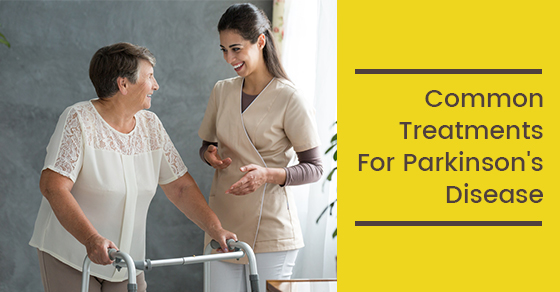Parkinson’s disease is a condition of the nervous system that impacts movement. Its development is gradual and starts with a rarely visible tremor in one hand. This condition is more common in older people, however, younger people can also be diagnosed with Young Onset Parkinson’s.

Symptoms of the disease include tremors, decelerated movement, changes in speaking, writing changes, damaged posture and balance, and stiffness.
The following are the 8 most common treatments for Parkinson’s disease:
- Medical prescription: Currently, there is no standard treatment for the disease. The treatment of each patient is based on their symptoms. However, there are several medications and therapies that are available to improve the quality of the patient’s life by reducing the symptoms. Here are some of the treatments used:
- Carbidopa-levodopa infusion
- Dopamine agonist
- Anticholinergic
- MAO type B inhibitors
- Pramipexole
- Tasmar
- Trihexyphenidyl
- Laropoda
- Benztropine mesylate
- Amantadine
- Surgical treatment options: Depending on the patient’s needs, health, medical history, and symptoms, the following procedures may be considered for the treatment of the disease:
- A. Deep brain stimulation: This surgery is used in the progressive cases of Parkinson’s disease in patients who are not responding to the drugs. The process includes the insertion of electrodes in the brain which are connected to a generator inserted in the areas of the chest. From the generator, electrical pulses are sent to the electrodes. These pulses help to reduce the symptoms.
- B. Pallidotomy: This surgery is done to eliminate the Globus pallidus which helps some patients feel better. It can improve tremors, balance, and movement.
- C. Thalamotomy: Tremors can sometimes be a result of a troubled thalamus part of the brain. This surgery is geared towards destroying the part of the thalamus to block the causes of tremors from reaching the patient’s muscles.
- Clinical trials: Researchers spend a lot of time studying prototypes of this disease in animals and cells. There have been several studies that have involved human subjects, called clinical trials. Taking part in a clinical trial can be a very gratifying experience for a person with Parkinson’s disease including getting access to the world’s top healthcare expert, advanced new treatments and high principles of care.
- Exercise: Exercise is a very significant part of human health. To a patient with Parkinson’s Disease, it is an important component in helping the maintenance of balance, movement, and daily activities.
- Complementary and over-the-counter therapies: Complementary therapies are used in addition to the medications. Examples of therapies include acupuncture, massages, and nutritional supplements.
- Medicinal marijuana: With medicinal marijuana now legalized in Canada, it is evident that there is a strong interest in its medicinal properties. This drug has been shown to directly benefit some people with Parkinson’s Disease. Cannabis can be neuroprotective and can save the neurons from being destroyed by the disease. It is also used to treat symptoms.
- Alternative medicines: These may include meditation, yoga, tai-chi, and art therapy, among others.
- Coping and support: It is difficult to live with a chronic illness. Most of the time, a patient finds the loss of independence hard, particularly because the disease affects every aspect of their lives. Friends and families can provide emotional support and nursing care is also important.
Home Health Care For Parkinson’s Disease
To learn more, call C-Care Health Services today at +1-866-433-1085 or contact us here.

